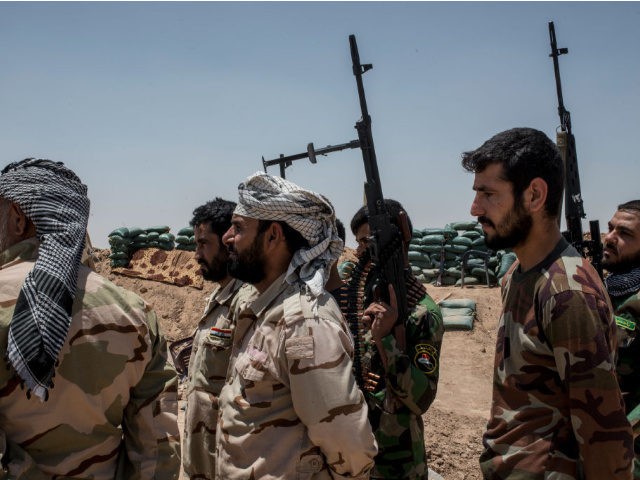Between 300 and 550 Islamic State (ISIS/ISIL) jihadis remain active in the Philippines, a testament to the lingering threat posed by the jihadi group despite efforts by U.S.-backed local forces, the office of the inspector general (OIG) at the Pentagon told American lawmakers in a report released this week.
Under Operation Pacific Eagle-Philippines (OPE-P), over 270 American troops are providing support to their Filipino counterparts fighting the local Islamic State (ISIS-P) faction — primarily aerial intelligence, surveillance, and reconnaissance support.
In its latest quarterly (October 1–December 31, 2018) report to Congress covering activities related to the operation in the Philippines, the OIG at the U.S. Department of Defense (DOD), a watchdog agency, revealed:
ISIS-P remained active with approximately 300 to 550 fighters in the southern Philippines. Its activity was limited to the Sulu archipelago [within the Muslim-majority Mindanao island region], where it had several low-level clashes with the AFP [Armed Forces of the Philippines ], each of which resulted in greater casualties for ISIS-P than the Philippine government forces according to [the U.S. military]
In addition, a bomb blast at a southern Philippine shopping mall on December 31, 2018, was attributed by Philippine officials to ISIS-P, but no group claimed responsibility.
During its peak, ISIS-P’s manpower reached 1,000 jihadis, the IG pointed out.
Citing the group’s fragmented membership, lack of unified leadership, and its frayed links with the core ISIS organization in Iraq and Syria, the IG found that the group’s Filipino wing failed “in expanding its areas of operations or influence this quarter.”
“This quarter, ISIS-Philippines (ISIS-P) remained in a weakened state but still posed a threat to security in the southern Philippines,” the watchdog agency noted, later adding, “ISIS-P neither gained nor lost territory during the quarter.”
Late last year, the Center for Strategic and International Studies (CSIS) told the Washington Times that a growing number of “battle-hardened” ISIS-linked foreign fighters were flocking to Southeast Asia, namely to the southern Philippines’ Mindanao region, from Iraq and Syria.
The growing number of ISIS jihadis in the Philippines has been galvanizing local terrorist groups in Mindanao into renewing efforts to establish a caliphate in the region, the Guardian added a few weeks later, echoing other assessments.
According to the IG, however, “there was no evidence of either an influx or exodus of foreign fighters during the quarter.”
Echoing the Guardian, the IG noted that there were at least 40 foreign fighters, “mostly from Malaysia and Indonesia.”
Core ISIS, which the U.S. military believes continues to generate revenue through illicit activities in Iraq and Syria, has reduced its financial support to its Filipino wing, the IG found.
“This may be attributed to a weakening of the global ISIS organization rather than a lack of willingness of ISIS-Core to support ISIS-P,” the inspector general noted. ISIS-P is one of several Islamic State factions still active outside Iraq and Syria.

COMMENTS
Please let us know if you're having issues with commenting.